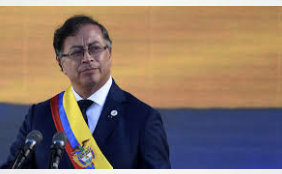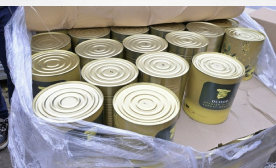Nabin Pathak,1,2 Shreya Dhungana,3 Bijaya Basyal,4 Prabhat Kumar Jha,5 Sunil Shrestha,6 Panna Thapa,7,8 Vibhu Paudyal9,10
1Drug Information Unit and Pharmacovigilance Cell, Department of Pharmacy, Hetauda Hospital, Madan Bhandari Academy of Health Sciences, Hetauda, Bagmati Province, Nepal; 2Department of Pharmacy and Clinical Pharmacology, Madan Bhandari Academy of Health Sciences, Hetauda, Bagmati Province, Nepal; 3Department of Pharmacy, National Model College for Advanced Learning, Tribhuvan University, Kathmandu, Nepal; 4Pharmacy Unit, Prithvi Chandra Hospital, Nawalparasi, Nepal; 5Pharmacy Officer, Province Health Logistic Management Center, Dhanusha, Nepal; 6Department of Research and Academics, Kathmandu Cancer Center, Bhaktapur, Province Bagmati, Nepal; 7Department of Pharmacy, Kathmandu University, Dhulikhel, Kavre, Nepal; 8Multidimensional Cannabis Research Centre (MCRC), Kathmandu University, Dhulikhel, Nepal; 9School of Pharmacy, College of Medical and Dental Sciences, University of Birmingham, Birmingham, B15 2TT, UK; 10Florence Nightingale Faculty of Nursing, Midwifery and Palliative Care, King’s College London, London, UK
Correspondence: Nabin Pathak, Drug Information Unit and Pharmacovigilance Cell, Department of Pharmacy, Hetauda Hospital, Madan Bhandari Academy of Health Sciences, Makwanpur, Hetauda, Bagmati Province, Nepal, Email nabin.pathak@mbahs.edu.np; pathaknabin89@gmail.com
Abstract: The unique historical and cultural background of Nepal has shaped its perspective on cannabis usage. Narcotic Drugs Control Act 1976 of Nepal prohibits the cultivation, production, manufacture, sales, and distribution of narcotic drugs, which also include various forms of cannabis. With proponents for cannabis legalization increasing in the country, it is equally crucial to analyze context and practices in countries already adopting legalization. As such, this article contextualizes the current debates in Nepal with global policies and practices and talks about the possible impacts of changing the laws on society, the economy, and public health. Policymakers in Nepal must make decisions based on evidence and facts when deciding how to regulate cannabis.
Keywords: cannabis, legalization, decriminalization, Nepal
Introduction
According to the World Health Organization (WHO), about 147 million people worldwide consume cannabis, accounting for more than 2.5% of the world population.1 Cannabis sativa has a long history of human use for medicinal, shamanic, and recreational purposes.2,3 The versatility of cannabis has grown over time due to its abundant chemical constituents, phytochemicals, and lignocellulosic biomass, making it valuable for various health-related and non-health-related applications.4 The cannabis plant contains around 570 different chemicals, with the most important ones being Tetrahydrocannabinol (THC) and Cannabidiol (CBD), according to the United States (US) National Center for Complementary and Integrative Health (NCCIH).5 THC is found to have psychoactive effects,6 and CBD is found to have more of a relaxing effect.7–9 The level of abuse is associated with a higher level of THC than CBD.10
History and Use of Cannabis as a Crude Drug
Traditionally, in Nepal, different parts of cannabis are utilized for food, fiber, and medicinal purposes.11 Ethnomedical practices in Nepal involve the use of cannabis for treating conditions such as diarrhea, constipation, and snake bites.12 Within the hilly regions of Nepal, cannabis was also used as a food for cattle and fibers, whereas few people used it for psychotropic effects.13 In a study conducted to find medicinal weeds in the rice field of Kathmandu Valley, cannabis leaves were also found to have medicinal effects.14
Mainly, the sale of cannabis was legal in the early 1970s in Nepal, where people from the western part of the world came to enjoy cannabis for recreational purposes.13 Apart from Nepal, indigenous communities in the Bajaur Agency of Pakistan use cannabis leaves for their sedative, analgesic, diuretic, antispasmodic, astringent properties, and even as a narcotic. While the locals used the entire plant’s decoction as a cooling agent, the fruit was used to treat children’s intestinal pain and alleviate body pain, constipation, and fever.15 In India, cannabis has been used for a wide range of medicinal purposes, including treating exhaustion, inducing euphoria, stimulating appetite, relieving pain, and managing various ailments such as asthma, diarrhea, and dysentery.16 However, there are also beliefs that the inappropriate use of cannabis can lead to insanity, weight loss, and diminished semen production.17 Cannabis seeds have been used as a significant part of the human diet throughout Asia and are consumed in various ways, such as raw, pickled, roasted, and even grounded.18 This may be attributed to the fact that the seeds of non-psychoactive cannabis served as a potential source of oil, protein, dietary fibers, and a considerable amount of omega-6 and omega-3 fatty acids.19
Status of Cannabis Use, Policies, and Research in Nepal
Cannabis production and its use has been well-documented since the 19th century.11,13 Nepal saw a surge in tourism during the 1960s-70s as the government permitted legal cannabis shops. However, the movement slowed down in the early 1970s due to Nepal’s adoption of stricter regulations, influenced by the US government.20 Because of the surge of tourists, the influence was heavily seen among Nepalese youth following the lifestyles of hippies along with the use of recreational cannabis.13 It was under this directive that the back-then monarchial government of Nepal banned the production and sales of hashish and marijuana with the introduction of the Narcotic Drugs (Control) Act 1976 (NDCA).21 Few factors that may have promoted the slowing of the hippie movement and the initiation of NDCA could have been the wide use of cannabis among Nepalese youth, the pressure from the UN to join and collaborate with nations in outlawing cannabis, and the pressure from US government for control of narcotics.13,22 The act afterward prohibited the cultivation, production, manufacturing, sales, distribution, import, and export of narcotic drugs too.21 Despite this, presently, the status of cannabis use, policies, and research in Nepal is growing. Even though cannabis consumption is prevalent in Nepal, particularly in rural areas where it is used for medicinal and religious purposes,13 it is deemed illegal under the NDCA. Within Hindu mythology, cannabis was found to be a revered substance by Lord Shiva (a Hindu deity). People smoke and consume cannabis and its related products (grounded leaves, drinks from cannabis products) during Maha Shivaratri, which is one of the major festivals celebrated in the name of Lord Shiva. For many people, consuming cannabis in these religious contexts shows their way of admiring the deity. At the same time, for sadhus (holy men), it is a means of connecting with the Lord himself physically and spiritually.22
The act categorizes cannabis/marijuana and medical cannabis/marijuana all under Narcotic drugs, where Chapter 2, section 4, “Prohibited Acts” of the act makes it clear that no person is allowed in the process of cultivation, production, or trading of cannabis or any of the categorized products.21 Chapter 3, Section 14, “Penalties” of NDCA, defines and sets out the criteria for penalties and punishment regarding the consumption, cultivation, and anyone who produces, purchases, and is involved in the selling, distributing, importing, and exporting cannabis products.21 According to the National Master Plan on Prevention and Control of Narcotic Drugs report issued by the Ministry of Home Affairs, Nepal it shows that among the narcotic drug users, cannabis was the most widely used (80.4%) drug as an early narcotic. The report also showed that there had been a 5.06% annual increase in the number of narcotic drug users over the course of 7- year (2012 to 2019).23 Likewise, different cross-sectional studies conducted on medical students in Nepal also reported the prevalence of cannabis use ranging from 7.9% to 35%.24–29 Likewise, a study conducted in Dharan, Nepal, reported that about 51% of drug users and adolescents consume cannabis.30 This showed that the enforcement of this law is often lax, as cannabis is frequently sold and consumed throughout the country and is illicitly traded.13
Research on potential benefits and risks of cannabis use and the economic implications of legalization or decriminalization have been undertaken internationally. However, Nepal still lacks context specific research to inform cannabis policy development. NDCA of Nepal does not contain any specific provisions regarding the medical processing of cannabis.31 Only registered medicated narcotics can be sold under a legal prescription written by a registered medical practitioner in the presence of a registered pharmacy professional. However, the use of Narcotic drugs in making medicine is only possible through the confiscated or seized narcotic products but not through the cultivated goods as it is prohibited under the act.21 NDCA has been amended five times over the period. However, no conclusive statements are available on the legal status of medical cannabis processing.
Legalization of Cannabis
The legalization of cannabis refers to a system where cannabis production and sales are no longer considered a crime, and the activities are regulated by some laws,32 while decriminalization means removing criminal sanctions against an act, article, or behavior. Decriminalization of cannabis means it would remain illegal except for possession of and under a specified amount. The penalties for such offences may vary from civil fines to imprisonment, drug treatment, and education.32 There are three common beliefs regarding the legalization of medical cannabis, which is the therapeutic belief of cannabis, addiction and abuse potential, and spillover effects leading to increased recreational use and potential black market diversion.33 There has been considerable debate on these issues in many countries, including high and low-income countries. Many countries are even considering changing or updating their law regarding the matter. The first point stresses the therapeutic values of cannabis and how it should be treated as any other psychotropic drug or active pharmaceutical ingredient. The second point mainly focuses on the abuse potential of cannabis and how dangerous the negative impacts of the legalization of cannabis could be. The UN Convention in 1961 openly discussed the harmful effects of cannabis on health,33 while on the contrary, the opponent groups openly emphasized how cannabis is far less addictive and harmful than other prescription medicines. The third one, however, seems unconvinced if legalizing cannabis freely would have more effect on recreational than medicinal purposes. The doors to open and accessible black marketing of cannabis for medical purposes are of significant concern. Hence, there is a high chance that a thin line between the use of cannabis for medicinal purposes and the use of cannabis for recreational purposes could slowly fade away.33
For a low and middle-income country like Nepal, campaigners have argued that cannabis could be a potential medium for economic benefits. Literature highlights that legalization could reduce the government’s costs associated with enforcing anti-cannabis laws and the number of incarcerations for cannabis-related offences.34 It further reduces the violence and illicit drug trafficking, thus reducing the power and wealth of drug traffickers and cartels, too.35 Despite calls and proposals for legalizing or decriminalizing cannabis in Nepal, the government has yet to take concrete steps towards legalization. However, the success of cannabis legalization in generating economic benefits will depend on implementing appropriate policies and regulations to minimize adverse consequences and should be driven through science and evidence.
Status of Legalization of Cannabis in the International Contexts
Internationally, the legal status of cannabis varies among countries, with some implementing multiple forms of legalization.36 Though chemical moiety obtained from the cannabis plant, CBD, and other synthetic THC or analogs are approved for medical use in the US, the cannabis plant products are not approved for medical use. In the US, dietary or food products containing THC and CBD are not allowed to be sold in interstate commerce; however, the laws and regulations of a particular state determine whether it is legal to sell these products within the state.5 As per the Federal Substance Control Act of 1970, the Federal Drug Enforcement Agency classified Cannabis as a Schedule I substance, which means that it has a high potential to be abused without any acceptable medical use.37 As a result, possession of cannabis was then regarded as a federal crime.32 However, most states have permitted the medical use of cannabis by enacting Medical Marijuana Laws (MML), starting with California in 1996.38 The number of states permitting the recreational use of cannabis by passing Recreational Marijuana Laws (RML) is also increasing.39
Along with the District of Columbia (DC), 25 states in the US have legalized the medical and recreational use of cannabis for adults, with possession limits varying across the states. Five states have passed the MML and decriminalized possessing a small amount of marijuana. In the other 15 states, cannabis is legalized for medical purposes only. In the remaining 6 states, the consumption and trade of cannabis are still illegal; in 19 states, people can get jail time for possessing cannabis.40,41 In the UK, cannabis can be produced, supplied, imported, exported, and included or cultivated after obtaining a relevant license issued by the UK Home Office. However, in the UK, recreational use and unlicensed production, trade, and possession are subject to discipline with jail time, penalties, or both. Cannabis-based products for medicinal use, which may be a medicinal or investigational medicinal product, can be used and possessed by a patient with a prescription from an authorized healthcare practitioner. The UK also authorizes the industrial use of “industrial hemp” under a license issued by the UK Home Office.42 Medicinal use of cannabis under the official prescription of the authorized clinician is authorized throughout Australia following specified procedures by the State or Territory. Federal law of Australia considers the recreational use of cannabis as an illegal act. However, state-wise laws differ on the recreational use of cannabis. Recreational use of cannabis is illegal in all 6 states with varying punishment, while it is primarily decriminalized in the Northern Territory and is legalized in the Australian Capital Territory.43
In India, a neighboring country with an open border with Nepal, cultivation, manufacture, sale, and possession of different forms of cannabis, viz. charas (resin), hasis (liquid form), and ganja (flowering tops), is prohibited under the Narcotic Drugs and Psychotropic Substances Act, 1985 except for leaves or seeds (Bhang). However, cultivation of cannabis exclusively for research and medical purposes is allowed after getting a license from state governments in India. Medicinal use of cannabis in India is primarily confined to traditional systems of medicine such as Ayurveda and Homeopathy.44,45 In China, though industrial cannabis can be cultivated and produced, medicinal and recreational use and possession of cannabis are illegal.46 Leaves and roots of industrial cannabis can be used without processing in Chinese traditional medicine.47 While there is a growing trend toward cannabis legalization, significant variation exists in the legal status of cannabis (Table 1) across different countries and regions.
 |
Table 1 Status of Legalization of Cannabis in Different Countries |
Arguments Around Legalization and Decriminalization Status of Cannabis in Nepal
The debate over the legalization and decriminalization of cannabis in Nepal is multifaceted and influenced by religious, cultural, economic, and political factors.
Historical Context
Historically, cannabis has been used in Nepal for religious and cultural purposes.13 It is traditionally consumed during festivals like Shivaratri (one of the major festival of Hindus), where devotees of Lord Shiva use cannabis as an offering and as part of their spiritual practice.22 The cultural acceptance of cannabis in certain contexts has been longstanding, which complicates the purely legal and health-focused arguments against its use.
Political Landscape
Political parties in Nepal are divided on the issue. Some major political parties oppose legalization, citing concerns over public health and the potential for increased addiction and social problems. They argue that cannabis, like other drugs, can have detrimental effects on individuals and society, contributing to mental health issues and other social problems.
Conversely, other political factions support legalization and decriminalization, emphasizing the potential economic benefits. They argue that legalizing cannabis could create new economic opportunities through the cultivation, processing, and export of cannabis products. This perspective highlights the potential for job creation, increased agricultural productivity, and significant revenue from exports, particularly in the context of Nepal’s struggling economy.59,60
Economic Considerations
Economically, proponents of legalization point to the success of cannabis industries in other countries. For example, states in the US that have legalized cannabis have seen substantial tax revenues and economic growth in related sectors.61 Legalization could provide a similar boost to Nepal’s economy, particularly through regulated cultivation and export. There is also the potential for developing a medicinal cannabis industry, which could attract international investment and expertise.
Legal and Policy Developments
In 2020, a private bill entitled “Marijuana Cultivation Regulation and Management in Nepal” was registered with the parliament secretariat of the House of Representatives. The bill proposed the legalization of cannabis cultivation for economic benefits, primarily through export. However, it did not propose the legalization of public consumption of cannabis though there were discussions about allowing medical use for patients.62 The recent budget speech for the 2081/82 fiscal year of Nepal also mentioned developing acts and policies for the commercialization of cannabis, aiming to promote its medical use.63
Health and Social Implications
The health implications of cannabis use are also a major point of contention. Critics argue that increased availability could lead to higher rates of consumption, particularly among young people, and potential increases in mental health issues and substance abuse disorders.64,65 However, supporters argue that regulated legalization could ensure safer consumption, reduce the black market, and provide better access to medical cannabis for patients who need it.34
Comparative Perspectives
Looking at global trends, countries like Canada and several US states have shown that legalization can be managed to maximize economic benefits while minimizing social harm.50,53 These examples provide valuable lessons on regulation, enforcement, and public education that could be adapted to the Nepalese context.
Discussion Around Favorable and Adverse Impact of Legalization
Literature highlighting both the favorable and adverse impact of cannabis legalization are available (Table 1). Those in favor of legalization have highlighted economic benefits to the broader community. As per the Washington Post, $131.8 billion in federal tax revenue would be collected if cannabis was entirely legal in all 50 states of the US between 2017 and 2025.66 However, since the US adopted the idea of legalization in 1996,38 the rate of acute and chronic effects has also increased because of the consistent amount and diversified cannabis product supply chain being maintained without incarceration and due to the considerable reduction in retail prices as it all favored the frequent use of cannabis.51,67 Recreational use of cannabis has been shown to be associated with depression and suicidality,64 and the risk of psychosis is increased with heavy use of cannabis.68 A systematic review conducted to find out the impact of recreational cannabis legalization also showed that there was a decrease in arrest rates following recreational cannabis legalization. However, the study also mentioned how the findings of the places practicing recreational cannabis legalization were not consistent and required further research.69
Regarding acute effects, cannabis users are more prone to car accidents and emergency visits with acute psychotic signs and symptoms.65,70 With its chronic use, there are chances of increased dependence,71 impaired cognitive abilities reversed by abstinence,72 poor schooling and educational status among youths,73 hyperemesis syndrome,74,75 and psychotic symptoms.65 A case of cannabinoid hyperemesis syndrome was reported from Nepal in a 28-year-old male who consumed cannabis daily for more than 8 years.76 A study conducted in Nepal to determine the effect of long-term cannabis use showed that cannabis use leads to poor social and family relationships, occupational performance, and decreased libido.77 In Colorado, US, the number of cannabis-related hospitalizations for abuse, dependence, falls, injuries, car accidents, cyclic vomiting, and psychiatric illness has been reported to increase after the legalization of recreational cannabis.51 Similarly, cannabis is regarded as the reverse gate drug, which leads to the use of addictive substances such as alcohol and nicotine, thus further leading to harmful public health implications.51,57 A study conducted in 2019 examined the public health implications of cannabis legalization in South Africa. The study determined that the country would face challenges in managing the heightened health burden arising from legalization, primarily due to limited resources such as human capital, financial capacity, and healthcare infrastructure.57 Reflecting on the benefits and risks of cannabis legalization is crucial for proponents and policymakers to prepare further plans and identify possible consequences such that it’d help in prioritizing harm reduction and effective public health outcomes.
Way Forward
It is essential to undertake research regarding cannabis use and policies in Nepal, but securing funding for interventional and large population studies presents a major challenge.31 It is important to identify research priorities and work together with stakeholders from agricultural sector, medical sciences, tourism, and public health. The western side of Nepal is favorable for cannabis crop and there has been demand from some local communities regarding the right to grow cannabis and cultivation as it would lead to increased jobs and industrialization. However, further evidence is needed to understand therapeutic benefits and risks of CBD and THC. If legalization is to be considered, the government must prioritize strict policies on trade, adulteration, smuggling, and illegal export to address concerns about an open border between Nepal and India78 and to be able to ensure that any beneficial impact will outsize adverse outcomes in the population through appropriate surveillance and regulated supply. Policymakers in Nepal need a robust plan to utilise any economic benefits brought by possible legalization for patient benefits, and strategies to support ongoing research.
Conclusion
With several proponents for cannabis legalization or decriminalization in the country, it is also crucial for policymakers to study experiences from the countries practicing legalization. Policymakers must look out for the consequences brought by cannabis legalization with a focus on harm reduction and effective public health outcomes. Research priorities to identify potential benefits and harm through high-quality research and in the context of established norm, cultural, religious and societal practices are essential to inform future practices.
Disclosure
The authors report no conflicts of interest in this work.
References
1. World Health Organization. Cannabis; 2023. Available from: https://www.who.int/teams/mental-health-and-substance-use/alcohol-drugs-and-addictive-behaviours/drugs-psychoactive/cannabis. Accessed February 28, 2023.
2. McPartland JM. Cannabis systematics at the levels of family, Genus, and Species. Cannabis Cannabinoid Res. 2018;3(1):203. doi:10.1089/can.2018.0039
3. McPartland JM, Hegman W, Long T. Cannabis in Asia: its center of origin and early cultivation, based on a synthesis of subfossil pollen and archaeobotanical studies. Veg Hist Archaeobotany. 2019;28(6):691–702. doi:10.1007/s00334-019-00731-8
4. Andre CM, Hausman JF, Guerriero G. Cannabis sativa: the plant of the thousand and one molecules. Front Plant Sci. 2016;7. doi:10.3389/fpls.2016.00019
5. Cannabis (Marijuana) and cannabinoids: what you need to know. NCCIH; 2019. Available from: https://www.nccih.nih.gov/health/cannabis-marijuana-and-cannabinoids-what-you-need-to-know. Accessed February 14, 2023.
6. Perez-Reyes M, White WR, McDonald SA, Hicks RE, Jeffcoat AR, Cook CE. The pharmacologic effects of daily marijuana smoking in humans. Pharmacol Biochem Behav. 1991;40(3):691–694. doi:10.1016/0091-3057(91)90384-e
7. Shannon S, Lewis N, Lee H, Hughes S. Cannabidiol in anxiety and sleep: a large case series. Perm J. 2019;23(1):18–041. doi:10.7812/TPP/18-041
8. Zuardi AW, Rodrigues NP, Silva AL, et al. Inverted U-shaped dose-response curve of the anxiolytic effect of cannabidiol during public speaking in real life. Front Pharmacol. 2017;8:259. doi:10.3389/fphar.2017.00259
9. Ashton CH. Pharmacology and effects of cannabis: a brief review. Br J Psychiatry. 2001;178(2):101–106. doi:10.1192/bjp.178.2.101
10. Navarrete F, García-Gutiérrez MS, Gasparyan A, Austrich-Olivares A, Manzanares J. Role of cannabidiol in the therapeutic intervention for substance use disorders. Front Pharmacol. 2021;2021:12.
11. Clarke R. Traditional cannabis cultivation in darchula district, Nepal—seed, resin and textiles. J Ind Hemp. 2007;12:19–42. doi:10.1300/J237v12n02_03
12. Bhatt MD, Adhikari YP, Kunwar R. Ethnobotany of weeds in kanchanpur district, far-western Nepal. Ethnobot Res Appl. 2021;21:1–19.
13. Shakya DR, Upadhaya SR, Thapa M. Cannabis use and Abuse in Nepal: a review of studies. JNMA J Nepal Med Assoc. 2021;59(241):954–961. doi:10.31729/jnma.6931
14. Dani R, Tiwari A. Medicinal weeds in the rice field of Kathmandu Valley, Nepal. Himal Biodivers. 2018;1:16–26. doi:10.3126/hebids.v6i0.33528
15. Aziz MA, Khan AH, Adnan M, Izatullah I. Traditional uses of medicinal plants reported by the indigenous communities and local herbal practitioners of Bajaur Agency, federally administrated tribal Areas, Pakistan. J Ethnopharmacol. 2017;198:268–281. doi:10.1016/j.jep.2017.01.024
16. Chopra IC, Chopra RN. The use of the cannabis drugs in India. United Nations: Office on Drugs and Crime; 1957. Available from: html://www.unodc.org/unodc/en/data-and-analysis/bulletin/bulletin_1957-01-01_1_page003.html. Accessed April 7, 2023.
17. Fisher J Cannabis in Nepal: an Overview; 2016. Available from: https://www.semanticscholar.org/paper/Cannabis-in-Nepal%3A-An-Overview-Fisher/6e5ed484910443e6a5eb5f244295e7862fae5d54. Accessed April 8, 2023.
18. Clarke RC, Merlin MD. Cannabis domestication, breeding history, present-day genetic diversity, and future prospects. Crit Rev Plant Sci. 2016;35(5–6):293–327. doi:10.1080/07352689.2016.1267498
19. Callaway JC. Hempseed as a nutritional resource: an overview. Euphytica. 2004;140(1):65–72. doi:10.1007/s10681-004-4811-6
20. Remembering freak street, Saturday features, ekantipur.com; 2012. Available from: https://web.archive.org/web/20120930022018/http:/www.ekantipur.com/2011/10/01/features/remembering-freak-street/341660.html. Accessed April 6, 2023.
21. Narcotic Drugs (Control) Act, 2033 (1976) – Nepal Law Commission; 1976. Available from: https://lawcommission.gov.np/en/?cat=407. Accessed March 5, 2023.
22. Acharya SL, Howard J, Panta SB, Mahatma SS, Copeland J. Cannabis, lord shiva and holy men: cannabis use among Sadhus in Nepal. J Psychiatr Assoc Nepal. 2014;3(2):9–14. doi:10.3126/jpan.v3i2.12379
23. National Master Plan on Prevention and Control of Narcotic Drugs, Ministry of Home Affairs, Government of Nepal. Accessed June 18, 2024. https://moha.gov.np/page/national-master-plan-on-prevention-and-control-of-narcotic-drugs-2
24. Panthee B, Panthee S, Gyawali S, Kawakami N. Prevalence and correlates of substance use among health care students in Nepal: a cross sectional study. BMC Public Health. 2017;17(1):1–10. doi:10.1186/s12889-017-4980-6
25. Shrestha JTM, Tiwari S, Kushwaha DK, Bhattarai P, Raj R. Prevalence of psychoactive drug use among medical students in a medical college of Nepal. JNMA J Nepal Med Assoc. 2020;58(230):717. doi:10.31729/jnma.5237
26. Kushwaha RP, Rauniar GP, Koirala B, Mandal NK. Prevalence of substance use among undergraduate students in a medical college of Nepal. JNMA J Nepal Med Assoc. 2019;57(219):315. doi:10.31729/jnma.4605
27. Bhatta S, Sapkota MR, Shrestha S, Shrestha RM. Substance abuse among students in a dental school. JNMA J Nepal Med Assoc. 2018;56(214):896. doi:10.31729/jnma.3900
28. Shyangwa PM, Joshi D, Lal R. Alcohols and other substance use/abuse among junior doctors and medical students in a teaching institute. J Nepal Med Assoc. 2007;46(167). doi:10.31729/jnma.283
29. Khanal P, Ghimire RH, Gautam B, et al. Substance use among medical students in Kathmandu valley. J Nepal Med Assoc. 2010;50(180). doi:10.31729/jnma.26
30. Chapagain K, Rai D, Koirala B, Rauniyar GP. Exploring the prevalence and correlates of substance abuse amongst the adolescents of dharan, Eastern Nepal. J Nepal Health Res Counc. 2020;18(2):263–267. doi:10.33314/jnhrc.v18i2.2484
31. Ransing R, Rosa de la PA, Pereira-Sanchez V, et al. Current state of cannabis use, policies, and research across sixteen countries: cross-country comparisons and international perspectives. Trends Psychiatry Psychother. 2022;44(Suppl 1). doi:10.47626/2237-6089-2021-0263
32. Svrakic DM, Lustman PJ, Mallya A, Lynn TA, Finney R, Svrakic NM. Legalization, decriminalization & medicinal use of cannabis: a scientific and public health perspective. Mo Med. 2012;109(2):90–98.
33. Sznitman SR, Bretteville-Jensen AL. Public opinion and medical cannabis policies: examining the role of underlying beliefs and national medical cannabis policies. Harm Reduct J. 2015;12(1):46. doi:10.1186/s12954-015-0082-x
34. Hall W. The costs and benefits of cannabis control policies. Dialogues Clin Neurosci. 2020;22(3):281–287. doi:10.31887/DCNS.2020.22.3/whall
35. Review TB. How marijuana legalization would benefit the criminal justice system. The Blue Review; 2020. Available from: https://www.boisestate.edu/bluereview/how-marijuana-legalization-would-benefit-The-criminal-justice-system/. Accessed March 16, 2023.
36. The Global Cannabis Report. Growth & Trends Through 2025. New Frontier Data; 2023. Available from: https://newfrontierdata.com/product/the-global-cannabis-report-2021/. Accessed March 15, 2023.
37. Pacula RL, Chriqui JF, Reichmann DA, Terry-McElrath YM. State medical marijuana laws: understanding the laws and their limitations. J Public Health Policy. 2002;23(4):413–439. doi:10.2307/3343240
38. Pacula RL, Powell D, Heaton P, Sevigny EL. Assessing the effects of medical marijuana laws on marijuana use: the devil is in the details. J Policy Anal Manag J Assoc Public Policy Anal Manag. 2015;34(1):7–31.
39. Carliner H, Brown QL, Sarvet AL, Hasin DS. Cannabis use, attitudes, and legal status in the U.S.: a review. Prev Med. 2017;104:13–23. doi:10.1016/j.ypmed.2017.07.008
40. DISA Global Solutions Inc. MARIJUANA LEGALITY BY STATE. DISA. Available from: https://disa.com/marijuana-legality-by-state. Accessed June 26, 2024.
41. ProCon.org. State-by-state medical marijuana laws. medical marijuana. Available from: https://medicalmarijuana.procon.org/legal-medical-marijuana-states-and-dc/. Accessed June 26, 2024.
42. Cannabis law and legislation in the UK, CMS Expert Guides; 2023. Available from: https://cms.law/en/int/expert-guides/cms-expert-guide-to-A-legal-roadmap-to-cannabis/united-kingdom. Accessed March 11, 2023.
43. A state-by-state guide to cannabis in Australia, Investing News Australia; 2023. Available from: https://investingnews.com.au/guide-to-cannabis-in-australia. Accessed March 11, 2023.
44. Sharma S. An overview on narcotic drugs and psychotropic substances act, 1985. J Forensic Sci Crim Investig. 2017;4(4). doi:10.19080/JFSCI.2017.04.555644
45. National Policy on Narcotic Drugs and Psychotropic Substances; 2017. Available from: https://taxguru.in/corporate-law/national-policy-on-narcotic-drugs-and-psychotropic-substances.html. Accessed March 11, 2023.
46. Cannabis Use in China – laws, history, uses and more info. Sensi Seeds; 2020. Available from: https://sensiseeds.com/en/blog/countries/cannabis-in-china-laws-use-history/. Accessed March 11, 2023.
47. Global Cannabis Guide- China, World Law Group; 2020. Available from: https://www.theworldlawgroup.com/news/2020-global-cannabis-guide-china. Accessed March 16, 2023.
48. Marijuana legality by state; 2023. Available from: https://disa.com/maps/marijuana-legality-by-state. Accessed March 11, 2023.
49. Yu B, Chen X, Chen X, Yan H. Marijuana legalization and historical trends in marijuana use among US residents aged 12–25: results from the 1979–2016 National Survey on drug use and health. BMC Public Health. 2020;20(1):156. doi:10.1186/s12889-020-8253-4
50. Krane K cannabis legalization is key to economic recovery, much like ending alcohol prohibition helped us out of the great depression. Forbes; 2020. Available from: https://www.forbes.com/sites/kriskrane/2020/05/26/cannabis-legalization-is-key-to-economic-recovery-much-like-ending-alcohol-prohibition-helped-us-out-of-The-great-depression/. Accessed March 5, 2023.
51. Hall W, Lynskey M. Assessing the public health impacts of legalizing recreational cannabis use: the US experience. World Psychiatry. 2020;19(2):179–186. doi:10.1002/wps.20735
52. Taking stock of progress, Cannabis legalization and regulation in Canada; 2022. Available from: https://www.canada.ca/en/health-canada/programs/engaging-cannabis-legalization-regulation-canada-taking-stock-progress/document.html. Accessed March 10, 2023.
53. Myran D, Finkelstein Y Legalizing cannabis led to increased cannabis poisonings in Canadian children. It could get a whole lot worse. The Conversation; 2022. Available from: http://theconversation.com/legalizing-cannabis-led-to-increased-cannabis-poisonings-in-canadian-children-it-could-get-A-whole-lot-worse-191938. Accessed March 11, 2023.
54. Walsh JH, Geoff Ramsey J. Uruguay’s cannabis law: pioneering a new paradigm. Brookings; 2018. Available from: https://www.brookings.edu/research/uruguays-cannabis-law-pioneering-A-new-paradigm/. Accessed March 10, 2023.
55. Laqueur H, Rivera-Aguirre A, Shev A, et al. The impact of cannabis legalization in Uruguay on adolescent cannabis use. Int J Drug Policy. 2020;80:102748. doi:10.1016/j.drugpo.2020.102748
56. Thelwell K. Benefits of legalizing marijuana in Uruguay. The Borgen Project; 2021. Available from: https://borgenproject.org/legalizing-marijuana-in-uruguay/. Accessed March 11, 2023.
57. Mokwena K. Social and public health implications of the legalisation of recreational cannabis: a literature review. Afr J Prim Health Care Fam Med. 2019;11(1):2136. doi:10.4102/phcfm.v11i1.2136
58. Cannabis law and legislation in South Africa; 2023. Available from: https://cms.law/en/int/expert-guides/cms-expert-guide-to-A-legal-roadmap-to-cannabis/south-africa. Accessed March 11, 2023.
59. Nepali lawmakers push marijuana legalization. Nikkei Asia; 2020. Available from: https://asia.nikkei.com/Politics/Nepali-lawmakers-push-marijuana-legalization2. Accessed March 7, 2023.
60. Why Nepal must legalise cannabis, Nepali Times; 2021. Available from: https://www.nepalitimes.com/here-now/why-nepal-must-legalise-cannabis/. Accessed March 7, 2023.
61. Brown J, Cohen E, Felix A. Economic benefits and social costs of legalizing recreational marijuana. Fed Reserve Bank Kans City Res Work Pap. 2023. doi:10.18651/RWP2023-10
62. Bill seeking legalisation of cultivation and consumption of medical marijuana registered in Parliament; 2020. Available from: https://kathmandupost.com/national/2020/03/03/bill-seeking-legalisation-of-cultivation-and-consumption-of-medical-marijuana-registered-in-parliament. Accessed April 8, 2023.
63. Budget speech of fiscal year 2081/82, ministry of finance. Available from: https://www.mof.gov.np/site/publication-category/17. Accessed July 7, 2024.
64. Gobbi G, Atkin T, Zytynski T, et al. Association of cannabis use in adolescence and risk of depression, anxiety, and suicidality in young adulthood. JAMA Psychiatry. 2019;76(4):426–434. doi:10.1001/jamapsychiatry.2018.4500
65. National Academies Press. The Health Effects of Cannabis and Cannabinoids: The Current State of Evidence and Recommendations for Research. National Academies Press; 2017.
66. Zezima K. Study: legal marijuana could generate more than $132 billion in federal tax revenue and 1 million jobs. Washington Post; 2019. Available from: https://www.washingtonpost.com/national/2018/01/10/study-legal-marijuana-could-generate-more-than-132-billion-in-federal-tax-revenue-and-1-million-jobs/. Accessed March 5, 2023.
67. Spindle TR, Bonn-Miller MO, Vandrey R. Changing landscape of cannabis: novel products, formulations, and methods of administration. Curr Opin Psychol. 2019;30:98–102. doi:10.1016/j.copsyc.2019.04.002
68. Marconi A, Di Forti M, Lewis CM, Murray RM, Vassos E. Meta-analysis of the association between the level of cannabis use and risk of psychosis. Schizophr Bull. 2016;42(5):1262–1269. doi:10.1093/schbul/sbw003
69. Farrelly KN, Wardell JD, Marsden E, et al. The impact of recreational cannabis legalization on cannabis use and associated outcomes: a systematic review. Subst Abuse Res Treat. 2023;17:11782218231172054. doi:10.1177/11782218231172054
70. World Health Organization. The health and social effects of nonmedical Cannabis Use. World Health Organization; 2016. Available from: https://apps.who.int/iris/handle/10665/251056. Accessed March 10, 2023.
71. Budney AJ, Sofis MJ, Borodovsky JT. An update on cannabis use disorder with comment on the impact of policy related to therapeutic and recreational cannabis use. Eur Arch Psychiatry Clin Neurosci. 2019;269(1):73–86. doi:10.1007/s00406-018-0976-1
72. Scott JC, Slomiak ST, Jones JD, Rosen AFG, Moore TM, Gur RC. Association of Cannabis with cognitive functioning in adolescents and young adults: a systematic review and meta-analysis. JAMA Psychiatry. 2018;75(6):585–595. doi:10.1001/jamapsychiatry.2018.0335
73. Horwood LJ, Fergusson DM, Hayatbakhsh MR, et al. Cannabis use and educational achievement: findings from three Australasian cohort studies. Drug Alcohol Depend. 2010;110(3):247–253. doi:10.1016/j.drugalcdep.2010.03.008
74. Sontineni SP, Chaudhary S, Sontineni V, Lanspa SJ. Cannabinoid hyperemesis syndrome: clinical diagnosis of an underrecognised manifestation of chronic cannabis abuse. WJG. 2009;15(10):1264–1266. doi:10.3748/wjg.15.1264
75. Allen JH, Moore de GM, Heddle R, Twartz JC. Cannabinoid hyperemesis: cyclical hyperemesis in association with chronic cannabis abuse. Gut. 2004;53(11):1566–1570. doi:10.1136/gut.2003.036350
76. Jaishi PP, Neupane SK, Joshi K, et al. Case report: a case of undiagnosed cannabinoid hyperemesis syndrome in rural part of Nepal. Ann Med Surg. 2022;84:104897. doi:10.1016/j.amsu.2022.104897
77. Sharma BP. Cannabis and its Users in Nepal. Br J Psychiatry. 1975;127(6):550–552. doi:10.1192/bjp.127.6.550
78. Pulami MJ. Introducing the idea of border governance for Nepal-India open border. J Polit Sci. 2023;77–97. doi:10.3126/jps.v23i1.52285


















